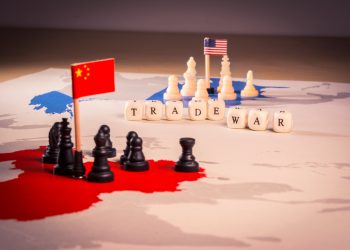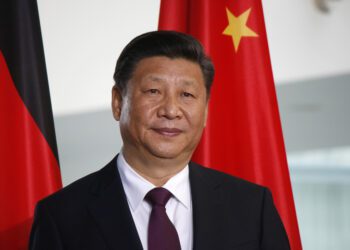It’s easy to forget that before COVID-19, the global business environment was thorny at best. Companies faced hard questions about how to deal with climate change and technological disruption. Demographic shifts, political polarisation and upskilling workers were also intractable concerns. Trade barriers, immigration rules and sometimes arbitrary regulations weighed on the agenda. The complexity of these issues meant many leaders were more likely to be paralysed by these problems than to do anything about them.
When the coronavirus pandemic hit, companies that had slow-walked their responses to previous crises reacted urgently and in real time to the existential threats posed by the disease. How do you keep the business operating when everyone—workers and customers—are at a distance? How do you ship products around the world when ports are closed or restricted? How do you maintain the sense of an organisation? Fueled by adrenaline, businesses laid waste to their traditional models and processes, and did so in days instead of weeks or months or years. They made gutsy decisions with limited data, executed quickly and adjusted on the fly. At one large US insurance company, the CEO told us, drivers began to clamour for auto insurance refunds because they weren’t using their vehicles as much, if at all. In four days—an unprecedented speed—the executive team made the decision to offer rebates, communicated the news and had the checks ready to go. Pivoting from the pre-COVID approach to digitisation, which often involved making incremental technological changes to existing business processes, many leaders quickly engineered fundamental transformations that enabled them to reach customers in new ways—one example is the rapid rollout of Disney+.
Now that we can begin to see the light at the end of the tunnel— mass vaccination and a resumption of many activities in some parts of the world —companies will actually face their biggest test, one that will have implications for decades: Can they avoid reverting to their pre-COVID bad habits? Can they make fundamental change decisions on an accelerated timeline? Are they able to apply, to a post-virus environment, the agile and crisply executed managerial processes they embraced when survival was at risk? The preexisting threats have, if anything, grown in strength. And it won’t be possible to meet them by leaning on the energising rush that spurred so much innovation and organisational grit. Pulling the equivalent of all-nighters isn’t a sustainable way to operate. Just as it would be self-defeating for companies to revert to their pre-COVID bad habits, they should also recognise that pandemic operating norms can’t carry them forward. To maintain urgency without stressing organisations too much, it will be essential to retain some of these fast decision-making elements.
- Identify and focus on the big issues that matter most to your company. Because COVID was obviously an existential issue, everybody addressed it immediately. When decision-making slows down, it is often because of competing priorities, which ensure that no single issue is targeted effectively enough.
- Engage a lot of people, especially relevant experts in the organisation and the company’s ecosystem and people who will be affected most by the decision, then make rapid choices and execute quickly. When you are inclusive, it spreads responsibility. More significantly, people around you know what the issue at hand is and find answers promptly—and you may discover the hidden potential in individuals at your firm.
- Revisit critical decisions often, checking performance metrics and fixing aspects of your plan that fail to meet expectations. Identify constraints that are hampering the strategy and focus on diminishing or removing them. In the pandemic, the obvious limitation was the need to keep people safe even as the business continued to operate. Within days, virtually every company was able to come up with remote working tactics that accomplished both aims. Can that clarity be maintained?
- Think about unanticipated consequences of your decisions—particularly to society at large and the environment you operate in—and be prepared to mitigate them. During COVID, some companies, including a few meat packers, ignored worker safety to maintain profits. That choice came back to harm them, in fines and reputation. In the post-virus landscape, companies will have to take into account the impact that their strategies and operations have on issues like climate change, income disparity and technological intrusions into people’s lives, among other things. They have to move fast without breaking things.
- Engage in parallel processes. After you have identified the business imperatives that you must address, develop answers to each of them simultaneously. The apparent success in producing a COVID vaccine in record time can largely be chalked up to the fact that, even as researchers at many sites were working on the science, the manufacturing and distribution were being built out in advance of the drug’s approval.
- Take care of people and adapt to their work preferences. Understand that individuals work at different speeds and that their most productive setting might vary. Some prefer to work alone; others, in groups. Be flexible and allow your most valuable workers the freedom to choose their own work styles within the constraints of the organisation. One organisation saw employee satisfaction rise from 80% to 99%, a virtually unheard-of number, because of how it incorporated the circumstances of individual employees in addressing work requirements. PwC research shows that many employers are similarly committed to giving remote workers what they need to be more productive.
- Manage pace. The best firms operated in the pandemic like great athletes who train with intervals of exertion followed by periods of rest. Intense effort was required to address the set of challenges presented by COVID. The most successful firms took time to marshal resources before the next challenge hit, sometimes even mandating personal breaks.
As we consider these intentional approaches and strive to sustain the urgency to attack large problems, there’s a final factor to consider: we can lean into the possibilities of creating hope. The pandemic remains an awful, often overwhelming and incomprehensible event. Those who addressed issues the best focused energies on things people could control and created a sense of purpose and possibility. They led with empathy and showed a willingness to listen. In the process, they didn’t simply develop new models of vaccinology or new ways of working—they helped people construct a bridge to a brighter future.
About the authors: Blair Sheppard is the global leader of strategy and leadership for the PwC network. He leads a team that is responsible for articulating PwC’s global strategy across 158 countries; Kevin Burrows is PwC’s global clients and industries leader. Based in London, he is a partner with PwC UK.












